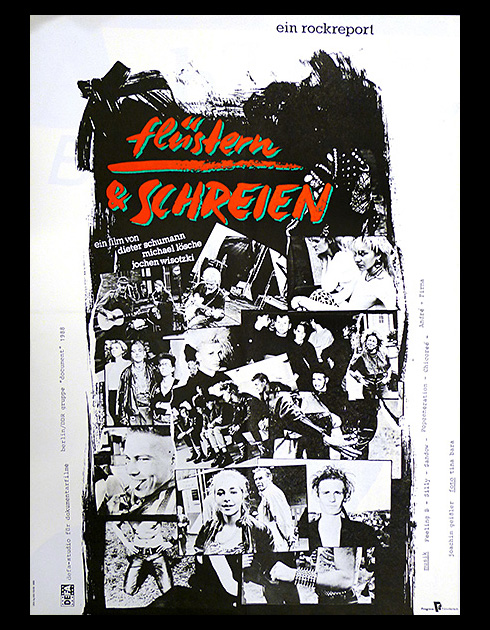A collection of East German film posters, most from the 1980s, lends a lighter tone to that region’s time spent under Soviet rule. East German film posters of foreign movies always differ from the originals, even if these differences are barely noticeable. Some of these posters were newly created through the commission of East German artists. Other posters kept the same promotional features displayed in their Western counterparts, save for a few minor changes, such as in chosen fonts.

The countries of production for the films advertised by the posters are surprisingly varied. There are token Soviet satellite state productions, such as Antonyho šance [Anthony’s Chance] from the CSSR and Die Csárdásfürstin [The Csárdás Princess] from Hungary. On the other hand, there are many posters depicting Western productions. France, Italy and the U.S. are the most frequent production countries we see while sifting through the film posters. Considering restrictive Soviet oversight of East German propaganda, the inclusion of movies such as Legal Eagles from the U.S. and Les Ripoux [My New Partner] from France may seem more than a bit confusing. But most of the posters for these movies, as mentioned before, were redone by East German artists to fit East German—or rather Soviet—ideological standards.
While all of the posters were either created or modified by East German artists, a third or more of the films themselves were produced in East Germany by DEFA (Deutsche Film-Aktiengesellschaft), better known as the production company that churned out all East German films. DEFA was a major vehicle for Soviet efforts to turn East Germans away from their recent Nazi past and toward a Communist-utopian future. The company held a virtual monopoly on the film industry, as well as the final word in the visual composition of the film posters.
One film poster quickly catches the eye. The objects of attention are not the graphics but rather the countries of production, East and West Germany. flüstern & SCHREIEN [Whisper and Shout] is a documentary film made in collaboration by West German film crews with DEFA. The film documents young people in the 1980s East German punk rock scene and the music genre’s perceived subversiveness. Visually, the poster, a photo-collage, represents the documentary’s contents well; young men and women with spiked hair, metal piercings, and dark face makeup walk the streets, attracting disapproving looks from those around them. In a country as politicized as East Germany, the fact that this poster was widely circulated, as well as the subsequent popularity of the film, comes as a surprise. Perhaps the best explanation for its popularity is the year the documentary was produced, 1988. Just a year later, the Berlin Wall fell and East Germany ceased to exist. flüstern & SCHREIEN foreshadowed changing political values and social tensions. Its poster is here to remind us how revealing films are of the social, political and economic climate of the countries in which they were produced.
The University Art Collection holds 500 film posters from East Germany and 205 from West Germany, purchased from a collector in 2008.
Stefania Lazar (C’2018), Booth Family Center for Special Collections Student Assistant
August 12, 2016
